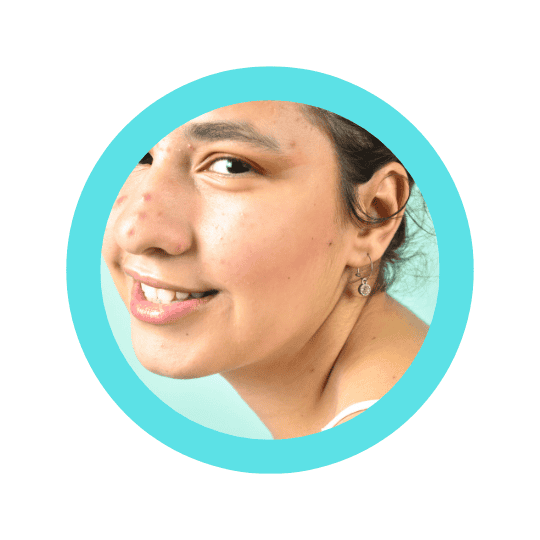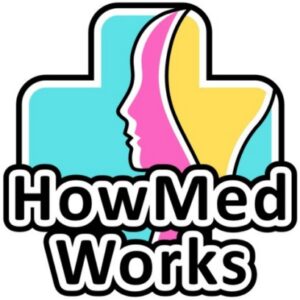
Contrary to popular belief, acne doesn’t just affect teenagers but adults as well. If you’re dealing with a stubborn case of acne or noticing that your acne isn’t improving with age, then there’s a chance that you may be dealing with what doctors classify as adult acne. Despite being less common than teen acne, adult acne tends to be more serious and harder to treat.
In this article, we’ll be going over the similarities and differences between teenage acne and adult acne so you can identify which type you have. Afterwards, we’ll discuss the best treatment options for each so you’ll know where to look next and be able to get positive results more quickly.
As someone who had both teen and adult acne, I know how challenging it can be to find a treatment plan that actually works for you. For years, I felt like I had exhausted almost all options with no improvement. Luckily, after tons of research, I found acne ingredients that work. Hopefully with this article, I’ll be able to make the process easier for you. 🙂
Table of Contents
Teenage Acne vs. Adult Acne: Overview
To get an overview, let’s first take a look at this visual that shows what teenage acne and adult acne look like:

As we move through this article, the four things you’ll want to keep in mind when determining whether you have teen or adult acne are:
- Age
- Severity
- Type(s) of acne
- Location
- Sex
Teenage Acne Explained

Teenage acne is a skin condition that affects most adolescents and young adults. According to the American Academy of Dermatology (AAD) , roughly 85 percent of people from age 12 to 24 have acne so teen acne is very common. This type of acne typically starts during puberty and resolves in your early 20s.
, roughly 85 percent of people from age 12 to 24 have acne so teen acne is very common. This type of acne typically starts during puberty and resolves in your early 20s.
Now, you might be wondering why teens in particular get acne. Teens get acne because of the increase in hormones associated with puberty. These hormones cause the skin to overproduce oil, which leads to clogged pores and acne breakouts. After puberty ends, hormones stabilize, resulting in less acne.
Although severe cases aren’t unheard of, teen acne usually involves mild and moderate forms of acne. The specific acne types that are most often seen in teenage acne are blackheads, whiteheads, pustules, and papules – ones that tend to be closer to the surface of the skin. (To see what each of these types of acne looks like, take a look at my “The 6 Types of Acne ” article!)
” article!)
It’s also important to note that teenage acne tends to affect boys slightly more than girls due to the specific hormones that are involved. Finally, when it comes to teenage acne, breakouts tend to be located in the T-zone (i.e. the forehead, nose, and chin), as shown in the example photo above.
tends to affect boys slightly more than girls due to the specific hormones that are involved. Finally, when it comes to teenage acne, breakouts tend to be located in the T-zone (i.e. the forehead, nose, and chin), as shown in the example photo above.
Overall, while teen acne can look different in different individuals, there are some similarities that you’ll see. To recap, here are the main characteristics of teenage acne:
- Age: Around age 10 to early 20s
- Severity: Mild to moderate
- Type(s) of acne: Blackheads, whiteheads, pustules & papules
- Location: T-zone (forehead, nose & chin)
- Sex: Affects boys more than girls
Unfortunately, for many people, acne continues past this age range, which is when it becomes classified as adult acne. (We’ll get more into that in just a bit.)
Treatments for Teenage Acne
One of the good things about teen acne is that it can usually be treated with over-the-counter products alone. Some great options that have been extensively studied include salicylic acid, benzoyl peroxide, and retinol. Even better, you can find all of these skincare ingredients at your local drug store or online!
Bonus Information: If you’re interested in learning more about the top treatment options for teenage acne, check out my “Skincare Ingredients: The Best Over-the-Counter Acne Medications
” article. In it, you’ll learn about all of the available options, how each ingredient works to fight acne, as well as where to find my personal recommendations. 🙂
When to See a Doctor If You Have Teenage Acne
Some people will only get a few pimples, while others may experience considerable breakouts. Although teenage acne is totally normal, you should definitely reach out to a dermatologist if you’re experiencing more severe forms – painful nodules or cysts, for instance.
Keep in mind however that you don’t need to have severe acne in order to see a doctor. If your acne bothers you, get it checked out! Treating mild or moderate cases of acne can be beneficial because you’ll be able to limit any potential scarring by addressing it early. For more severe cases, you’ll want to see a dermatologist. For less severe cases, feel free to go to your primary care physician (PCP).
Now, let’s move on to adult acne.
Adult Acne Explained

Adult acne is is a skin condition that affects some adults. As studies show, adult acne is more commonly seen in women, affecting 12 to 22 percent of women and only three percent of men. Evidently, adult acne is less common than teenage acne. That being said however, it appears that cases of adult acne are on the rise.
show, adult acne is more commonly seen in women, affecting 12 to 22 percent of women and only three percent of men. Evidently, adult acne is less common than teenage acne. That being said however, it appears that cases of adult acne are on the rise.
At its core, adult acne has the same root causes as teenage acne: fluctuating hormone levels cause the skin to produce excess oil, resulting in clogged pores and breakouts. However, the key here is that the hormonal changes responsible for adult acne are unrelated to puberty. Some examples include menstrual periods, pregnancy, and menopause, which is why adult acne is more common in women.
Important Note: Adult acne is also called hormonal acne and cystic acne. So, if you ever see any of these terms being used, just know that they’re all referring to the same skin condition.
Also, even though both teen and adult acne are largely dependent on hormone levels, the term “hormonal acne” is used to refer to adult acne and not teen acne.
Adult acne includes moderate and severe acne types. While you can still have blackheads and whiteheads, inflammatory types like nodules, cysts, papules, and pustules are more common in adult acne. (Again, if you’re unsure what these types of acne look like, quickly head over to my “The 6 Types of Acne ” article.) These types of acne are the most likely to lead to permanent, physical acne scars.
” article.) These types of acne are the most likely to lead to permanent, physical acne scars.
Compared to milder forms of acne, nodules and cysts are large and located deep under the skin, which makes them essentially unpoppable. Any attempt to squeeze nodular or cystic acne may cause damage to surrounding blood vessels and result in the pimple(s) filling with blood. These blood-filled pimples may appear dark red or purple, as seen in the example photo above.
A telltale sign of adult acne is acne that is red and/or purple in color and inflamed. Oftentimes, adult acne is also painful. (When I was dealing with adult acne, it physically hurt to sleep on the side of my face.) Finally, when trying to determine if your acne is adult acne, you’ll want to look at location. Typically, adult acne affects the lower, outer portions of the face, such as the cheeks, jaw, and chin.
As a recap, these are the main characteristics of adult acne:
- Age: 20s, 30s, 40s, and even 50s
- Severity: Moderate to severe
- Type(s) of acne: Nodules, cysts, pustules & papules
- Location: Cheeks, jaw & chin
- Sex: Affects women more than men
Treatments for Adult Acne
Although adult acne may improve slightly with age, it isn’t the norm. Unfortunately, adult acne doesn’t usually resolve on its own and, due to its more severe nature, requires prescription treatment. This means that you’ll have to go to a doctor, since over-the-counter products will likely be ineffective.
Adult acne isn’t something you have to live with, and there are plenty of effective, well-studied treatments out there. Some common prescription acne medications that your dermatologist may prescribe are antibiotics, spironolactone, and tretinoin. The upside of having a condition that’s common is that there’s lots known about it and tons of evidence-based treatments. 🙂
Bonus Information: To learn more about the top treatment options for adult acne, check out my “Skincare Ingredients: The Best Prescription Acne Medications
” article. There, you’ll learn about all of the options available, how each ingredient works, as well as which two medications worked for me!
When to See a Doctor If You Have Adult Acne
Adult acne requires stronger and more aggressive treatment that can only be obtained through a doctor. When it comes to adult acne, you’ll want to see a dermatologist instead of your PCP. This is because dermatologists are skin specialists and experts in advanced conditions like adult acne.
While PCPs can prescribe some acne medications, only dermatologists can prescribe the types and strengths of medications required to treat adult acne. The acne medications that PCPs can prescribe are limited to those that work on the surface of the skin only. However, dermatologists are able to prescribe medications that work systemically to treat the root of the problem.
What’s the Difference Between Teen Acne and Adult Acne?
At this point in the article, you should have a pretty good understanding of both teenage acne and adult acne. Now, it’s time to put together everything that you’ve learned. Here’s a rundown of the top similarities and differences between teen and adult acne:

Main Takeaway
Although there is no cure for acne, know that virtually every case can be cleared or significantly improved to where it causes minimal distress. For years, I was convinced that I was going to have acne for the rest of my life since nothing that I tried worked. Little did I know that there were more recent, advanced medications that were able to get my acne under control!
The bottom line is to work with your dermatologist, stick to treatment plans, and be patient. Acne doesn’t go away overnight, but your persistence will be well worth it! No matter how severe your acne is, there are treatments that will work for you. It might take a combination of a few products or seeing a couple of different dermatologists, but you’ll get there – and you’ll be happy you did. 🙂
Conclusion
This concludes the article! As you can see, even though the two may appear similar at first glance, teenage acne and adult acne are two very distinct skin conditions that require different treatment approaches.
If you’re interested in learning more about acne, feel free to take a look at some of my other articles on skincare . At this rate, you’ll become a pro in no time! As always, stay healthy and keep learning. 😀
. At this rate, you’ll become a pro in no time! As always, stay healthy and keep learning. 😀
